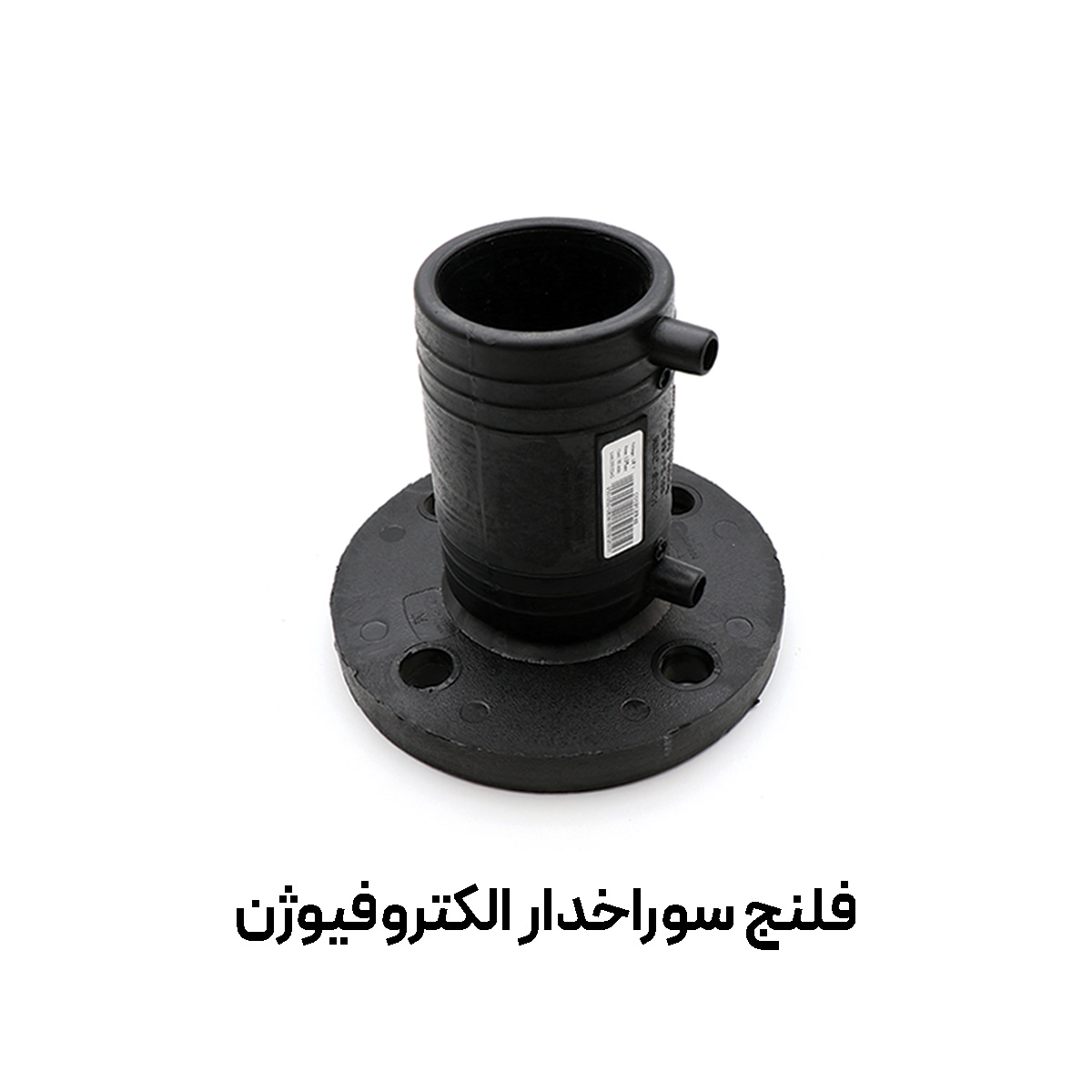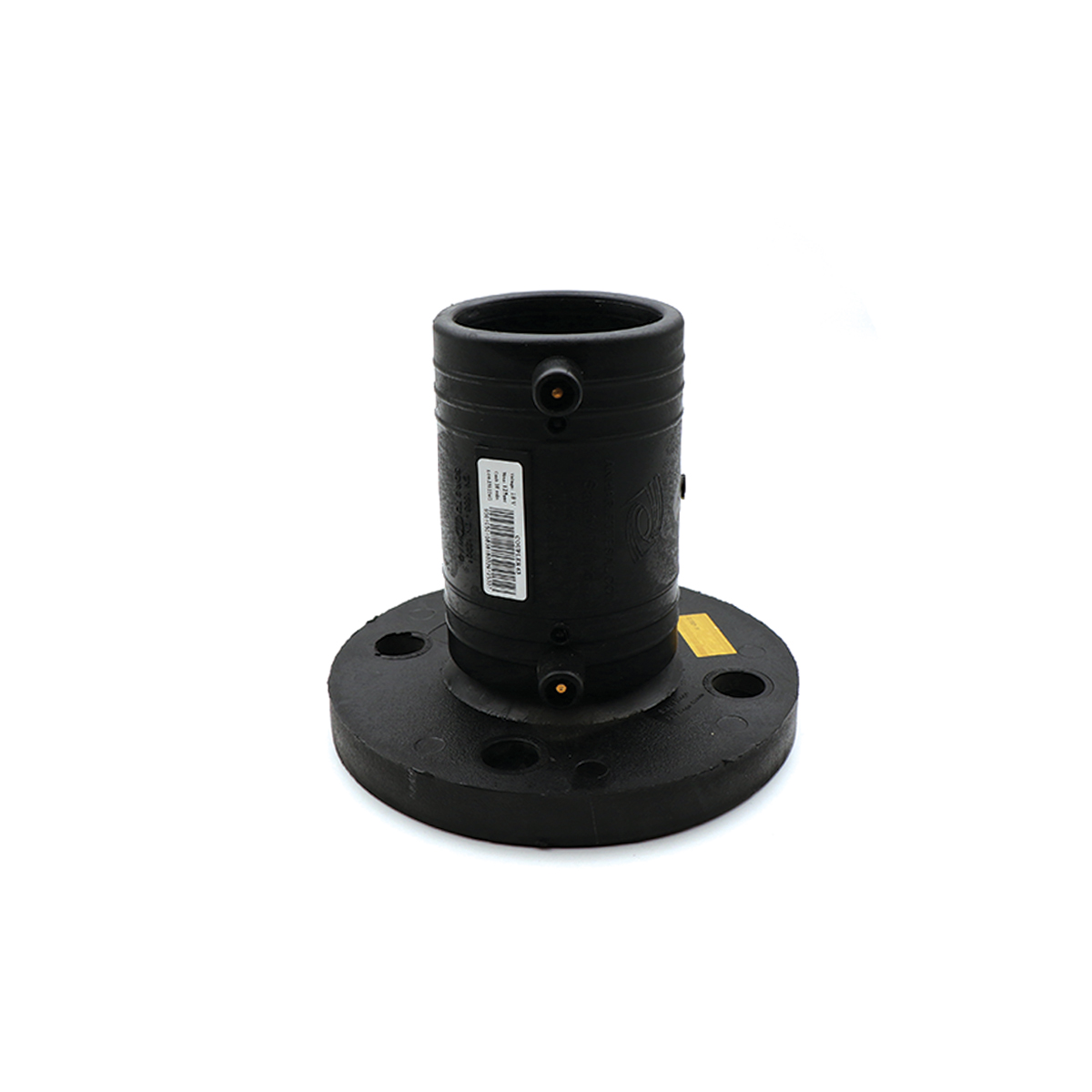Modern piping needs fittings that simultaneously harness the strength of metal and the agility of polymers to remain stable against pressure, impact, corrosion, and thermal stress. The electofusion bolt-hole flange with a steel core is designed exactly with this approach: by combining ST 37 steel and PE100 polyethylene, it delivers a reliable connection between polyethylene pipes and metal equipment without creating mechanical or electrochemical weak points. Its dual-layer structure—steel to carry compressive and bending loads, and polyethylene for seamless encapsulation and corrosion protection—has quickly replaced metal welding or traditional flanges in water supply, gas distribution, wastewater, and process facilities.
Engineered structure and materials used
The metallic core is precision-machined from low-carbon ST 37 steel, then sandblasted and phosphated to achieve ideal adhesion with the injected polyethylene. The polyethylene is PE100 grade with a low melt flow index so that, at electofusion temperatures, it provides uniform melting and good wetting while delivering high toughness after cooling. These two materials interlock through a two-stage injection process and form a barrier layer impermeable to moisture and corrosive ions.
Technical and dimensional specifications
For pressure ratings PN10 and PN16, the size range covers nominal diameters from 63 to 400 mm. Bolt circle spacing, bolt diameter, and ring thickness follow DIN 16963 and DIN 2501 so that mating with common metal fittings is possible without additional adapters.
| Nominal diameter (mm) | Number of holes | Bolt diameter (mm) | Thread designation | Steel ring thickness (mm) | Average weight (kg) |
|---|---|---|---|---|---|
| 63 | 4 | 12 | M12 | 8 | 0.54 |
| 90 | 8 | 16 | M16 | 10 | 1.10 |
| 110 | 8 | 16 | M16 | 12 | 1.62 |
| 160 | 8 | 20 | M20 | 14 | 3.45 |
| 225 | 12 | 24 | M24 | 16 | 6.80 |
| 315 | 12 | 24 | M24 | 18 | 11.90 |
| 400 | 16 | 27 | M27 | 20 | 18.30 |
Performance in harsh environments
The outer polyethylene surface limits water-vapor permeability to below 10¯¹¹ g·cm/(cm²·s·Pa), while the inner steel layer can withstand compressive stress over 40 MPa without excessive deflection. Across −20 to +60 °C, mechanical properties are retained; after UV exposure equivalent to ten years outdoors, strength reduction is reported at under 2%. Excellent resistance to chemical groups 2, 3, and 4 per ISO/TR 10358 has enabled use in CIP washing units and lines carrying dilute acidic solutions.
Execution benefits on projects
Reduced installation time: shorter bolts and lower torque required for sealing raise assembly speed by up to 35% versus a welded steel flange.
No need for paint or extra coating: the polyethylene jacket is self-protective, lowering annual maintenance costs.
Synergy with electofusion: localized heating of resistance wires melts only the polyethylene; the steel core stays out of the thermal cycle, avoiding residual stress.
Electrical integrity: in gas lines, the polyethylene layer blocks stray currents; no separate insulating flange is needed.
Comparison with other joining methods
| Evaluation metric | Electrofusion bolt-hole flange | Steel welded flange + adapter | Steel backing ring + polyethylene flange |
|---|---|---|---|
| Installation time (min) at DN160 | 6 | 18 | 12 |
| Number of components used | 1 | 3 | 2 |
| Body corrosion resistance | Very high | Medium | High |
| Total joint cost (base unit) | 0.78 | 1 | 0.92 |
| End-of-life recyclability | Yes | Limited | Limited |
Electrofusion procedure with an emphasis on quality control
Before welding, the pipe’s polyethylene surface is planed 0.2 mm with a dedicated scraper to remove the oxidized layer and raise surface energy for uniform melt. The flange and pipe are clamped in a centering jig with radial tolerance under 0.5 mm. The welder applies 39.5 V and 44 A for 110 s to the resistance wires. Smart temperature control via an internal thermocouple prevents local scorching; after power-off, a zero-load cooling cycle continues for 4 minutes to complete crystallization. Automatic logging of weld data on an RFID tag on the body enables quality traceability during service.
Wide application domains
Potable-water transmission and distribution networks requiring leak-free joints resistant to free chlorine.
Medium-pressure gas lines in seismic zones where the flexibility of polyethylene and the strength of steel must be available together.
Urban wastewater systems with variable chemistry and sudden peak flows.
Oil and petrochemical plants for transitioning from carbon-steel pipe to polyethylene in non-hazardous zones.
Pressurized irrigation networks to cut pressure loss and boost pump efficiency on sloped terrain.
Maintenance and periodic inspection guideline
Flanges installed outdoors should be checked every 24 months for surface cracking around the injection zone, bolt torque, and integrity of the polyethylene jacket using a 10 kV spark test. For buried lines, cathodic monitoring isn’t required; however, an annual insulation-resistance test can verify the health of the polyethylene layer.
TamamBaha’s role in the supply chain
TamamBaha’s specialist store, leveraging its nationwide distribution across Iran, supplies electrofusion bolt-hole flanges with steel cores in all sizes and pressure classes, complete with mill test reports and material analysis sheets. Industrial customers can view real-time stock online and place orders for fast delivery to project sites; buyers may also source this product through other authorized distributors if preferred.



